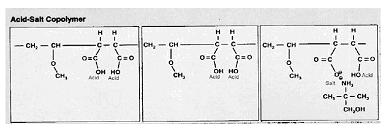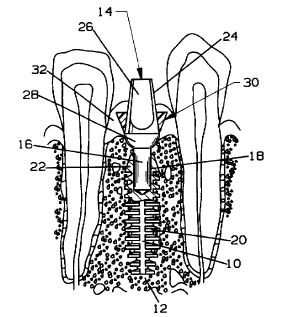(Fed. Cir., March 22, 2006) , the court reiterated that a suggestion, teaching, or motivation to combine the relevant prior art teachings does not have to be found explicitly in the prior art:
[T]he teaching, motivation, or suggestion may be implicit from the
prior art as a whole, rather than expressly stated in the references. . . .
The test for an implicit showing is what the combined teachings, knowledge of one of ordinary skill in the art, and the nature of the problem to be solved as a whole would have suggested to those of ordinary skill in the art.
In re Kotzab, 217 F.3d 1365, 1370 (Fed. Cir. 2000) (internal citations
omitted). However, rejections on obviousness grounds cannot be sustained by mere
conclusory statements; instead, there must be some articulated reasoning with
some rational underpinning to support the legal conclusion of obviousness. . . .
In considering motivation in the obviousness analysis, the problem
examined is not the specific problem solved by the invention but the general
problem that confronted the inventor before the invention was made. See, e.g.,
Cross Med. Prods., Inc. v. Medtronic Sofamor Danek, Inc., 424 F.3d 1293, 1323
(Fed. Cir. 2005) ("One of ordinary skill in the art need not see the identical
problem addressed in a prior art reference to be motivated to apply its
teachings."); Ecolochem, Inc. v. S. Cal. Edison Co., 227 F.3d 1361, 1372 (Fed.
Cir. 2000) ("Although the suggestion to combine references may flow from the
nature of the problem, ‘[d]efining the problem in terms of its solution reveals
improper hindsight in the selection of the prior art relevant to obviousness.’"
(internal citation omitted) (quoting Monarch Knitting Mach. Corp. v. Sulzer
Morat GmbH, 139 F.3d 877, 881 (Fed. Cir. 1998))); In re Beattie, 974 F.2d 1309,
1312 (Fed. Cir. 1992) ("[T]he law does not require that the references be
combined for the reasons contemplated by the inventor."); Princeton
Biochemicals, Inc. v. Beckman Coulter, Inc., 411 F.3d 1332, 1337 (Fed. Cir.
2005) (characterizing the relevant inquiry as "[would] an artisan of ordinary
skill in the art at the time of the invention, confronted by the same problems
as the inventor and with no knowledge of the claimed invention,[] have selected
the various elements from the prior art and combined them in the manner
claimed"); see also Graham, 383 U.S. at 35 (characterizing the problem as
involving mechanical closures rather than in terms more specific to the patent
in the context of determining the pertinent prior art). Therefore, the
"motivation-suggestion-teaching" test asks not merely what the references
disclose, but whether a person of ordinary skill in the art, possessed with the
understandings and knowledge reflected in the prior art, and motivated by the
general problem facing the inventor, would have been led to make the combination
recited in the claims. See Cross Med. Prods., 424 F.3d at 1321-24. From this it may be determined whether the overall disclosures, teachings, and suggestions of the prior art, and the level of skill in the art—i.e., the understandings and knowledge of persons having ordinary skill in the art at the time of the
invention—support the legal conclusion of obviousness. See Princeton
Biochemicals, 411 F.3d at 1338 (pointing to evidence supplying detailed analysis
of the prior art and the reasons one of ordinary skill would have possessed the
knowledge and motivation to combine). . . .
[In this case], Khan’s challenge to the sufficiency of the evidence supporting the Board’s prima facie case is directed at the motivation to apply the teachings of Stanton to achieve the claimed invention. In the 1995 decision, the Board found that Stanton "teaches the benefit of acoustic imaging in reading systems." The Board carefully examined the Anderson/Garwin combination and recognized that a skilled artisan confronted with the problem faced by Kahn would have been led by the teaching of Stanton "to add advantageous acoustic imaging" to the Anderson/Garwin combination so that it would have "word positions acoustically and visually indicated."
Stanton teaches that "[its] invention relates to augmentation of vision of those who have lost vision or have had their visual faculties diminished," col. 1, ll. 6-8, that it is "useful in teaching a deprivee to apprehend the position of a virtual sound source as representing a point in space," id., ll. 58-59, and that it may be used as a "rudimentary reading device," id., ll. 61-62. A skilled artisan, who knows of a "learning machine" that is capable of reading a word aloud by selecting the word on the screen at which the user is looking and seeks to provide a visually-impaired user better control over word localization, would have reason to solve that problem by adding two-dimensional sound case, , 283 F.3d 1335, 1338 (Fed. Cir. 2002), we conclude that substantial evidence supports the finding of a motivation to combine the teachings of Stanton to the Anderson/Garwin combination. Although a reasonable person might reach the opposite conclusion, there is far more than a "mere scintilla" of evidence present from which a reasonable mind could find a motivation to combine in view of Stanton’s express teaching that two-dimensional sound can be used to "substitute" for the lost sense of sight, to locate a point in space, and to create a "rudimentary reading device" for the visually impaired. See Cross Med. Prods., 424 F.3d at 1323 (holding that "[o]ne of ordinary skill in the art need not see the identical problem addressed in a prior art reference to be motivated to apply its teachings"). Because the Board need only establish motivation to combine by a preponderance of the evidence to make its prima facie.
We reject Khan’s argument that the Board overstated the knowledge of the person having ordinary skill in the art or employed improper hindsight in making its prima facie case. In both Lee and Rouffet, the Board recognized that the knowledge of the skilled artisan could provide the motivation to combine but concluded that no such knowledge was articulated and placed on the record. Lee, 277 F.3d at 1343-45; Rouffet, 149 F.3d at 1357-59. In this case, motivation to combine was articulated and placed on the record. As to the Anderson/Garwin combination, the Board identified the desire to free up the hands of the Anderson user as the problem confronted and found that Garwin itself evidenced the broad applicability of its optical controls to the claimed invention. As to the addition of Stanton, the Board identified express teachings in Stanton of "the benefit of acoustic imaging in reading systems" and properly related those teachings to the Anderson/Garwin combination.







 The application described the mark as a "configuration" that consists of a label with the words "FLASH DARE!" in a V-shaped background, and cut-out areas located on each side of the label. The cut-out areas consist of a hole in a garment and a flap attached to the garment with a closure device.
The application described the mark as a "configuration" that consists of a label with the words "FLASH DARE!" in a V-shaped background, and cut-out areas located on each side of the label. The cut-out areas consist of a hole in a garment and a flap attached to the garment with a closure device. 









